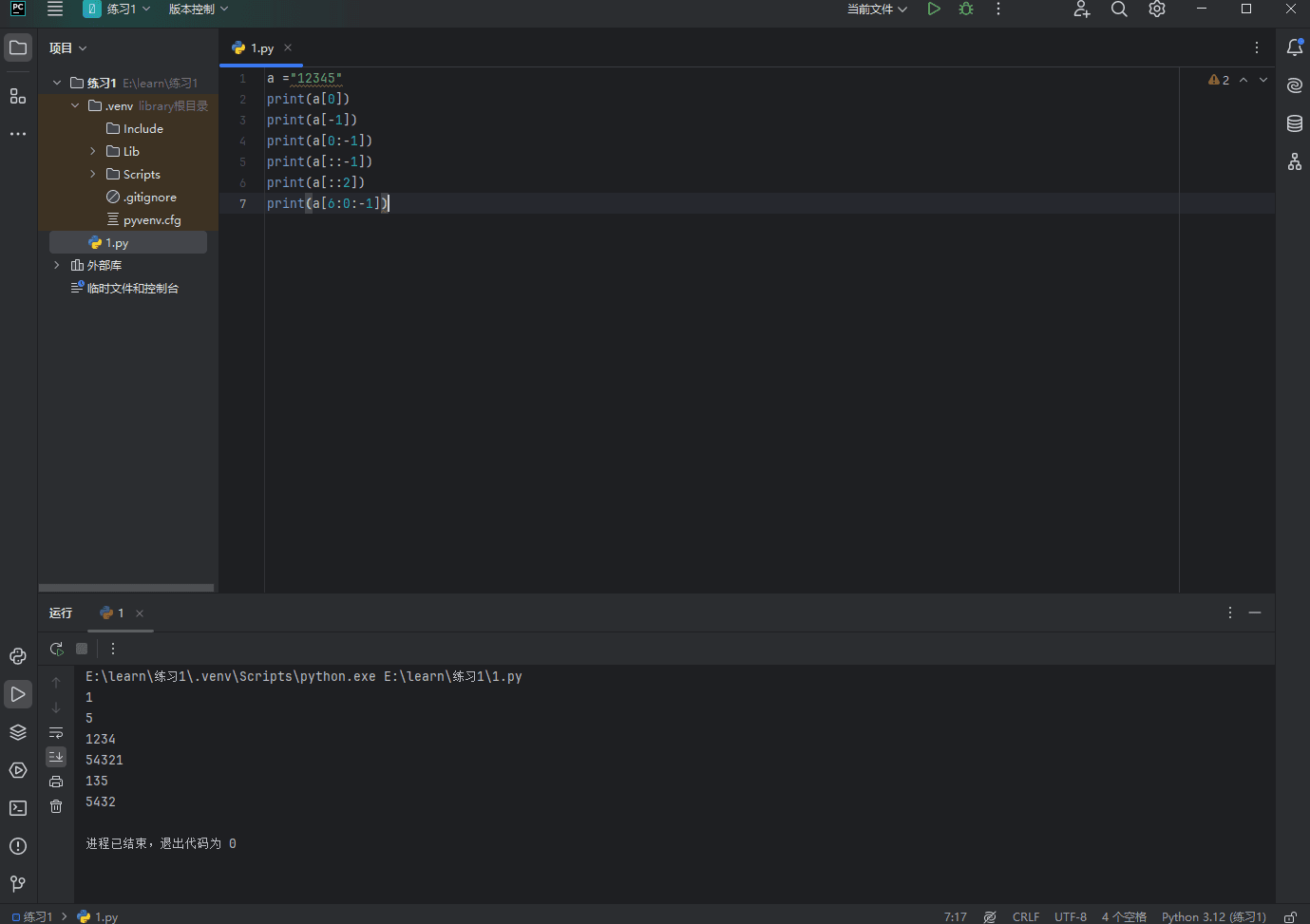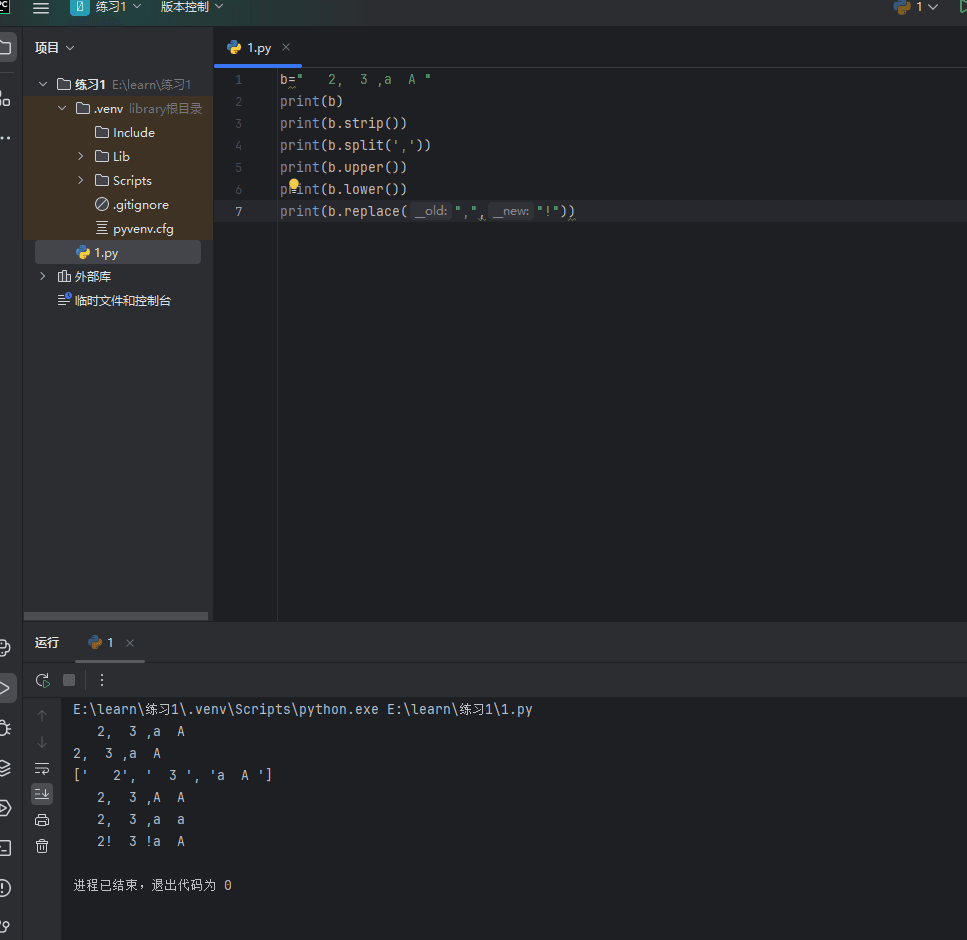切片语法#
sequence[start:stop]
下文中的 t 等效为 print
a ="12345"
print(a[0])#输出第一个
print(a[-1])#输出最后一个
print(a[0:-1])#输出从0到最后一个值(不包括最后一个的值),如果把0,-1改成1,5就是从1开始输出到第6个
print(a[::-1])#倒序输出
print(a[::2])#每隔两个输出,eg:1 3 5
print(a[6:0:-1])#倒叙输出从第7个到第1,如果把参数改成5输出结果是一样的,因为是输出第6个到第1个
字符串语法#
b=" 2, 3 ,a A "
print(b)
print(b.strip())#去除两边空格
print(b.split(','))#以,进行分隔切分字符
print(b.upper())#把所有小写字母变成大写字母
print(b.lower())#变成小写字母
print(b.replace(",","!"))#把逗号替换为感叹号
格式化输出#
a=input("你好请输入姓名:")
b=int(input("请输入年龄:"))#需要将输入转换为int型
print("你好我叫%s,今年%d"%(a,b))
input () 函数返回的是字符串(str)类型,而你在打印年龄时使用了 % d 格式化符,这是用于整数的。如果输入的年龄不是纯数字,或者你想确保代码更加健壮,最好将输入的年龄字符串转换为整数。
a=input("你好请输入姓名:")
b=int(input("请输入年龄:"))
print("你好我叫{i_a},今年{i_b}".format(i_a=a,i_b=b))#注意大括号,通过.format()函数实现

